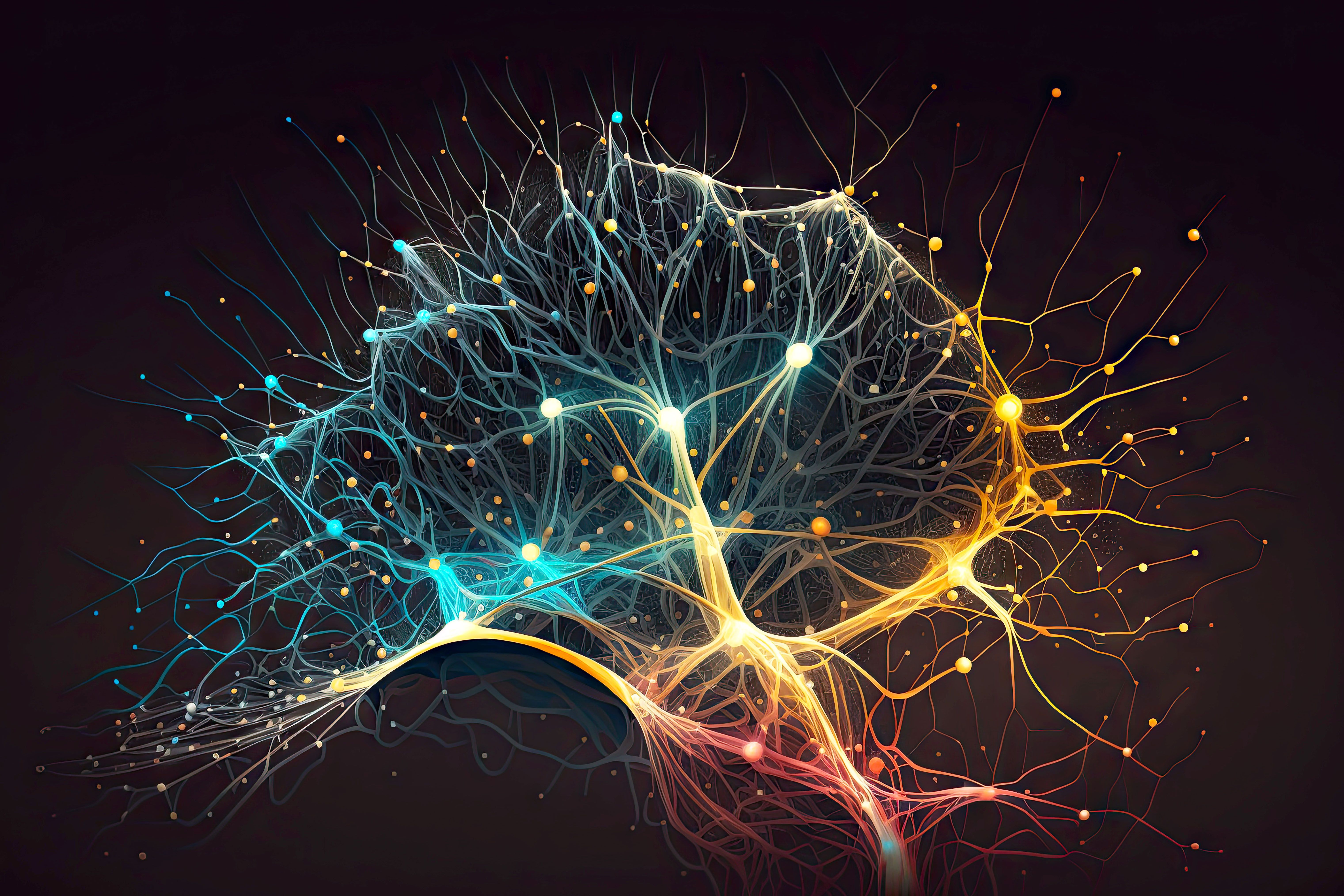Deep Learning Advances Gas Quantification Analysis in Near-Infrared Dual-Comb Spectroscopy
Researchers from Tsinghua University and Beihang University in Beijing have developed a deep-learning-based data processing framework that significantly improves the accuracy of dual-comb absorption spectroscopy (DCAS) in gas quantification analysis. By using a U-net model for etalon removal and a modified U-net combined with traditional methods for baseline extraction, their framework achieves high-fidelity absorbance spectra, even in challenging conditions with complex baselines and etalon effects.
Neural networks consisting of different neurons and connections, generative ai: © alfazet-chronicles - stock.adobe.com

Dual-comb absorption spectroscopy (DCAS) is a powerful technique for gas absorption analysis, providing broad spectral coverage and high resolution. However, baseline distortions and etalon effects can complicate the interpretation of DCAS results. To address these challenges, researchers Chao Huang, Tianyou Zhang, Xiangchen Kong, Yan Li, and Haoyun Wei from Tsinghua University and Beihang University in Beijing, China have developed a deep learning framework that overcomes these issues, enabling more accurate and reliable gas quantification analysis. This paper was published in the journal Applied Spectroscopy (1).
DCAS involves passing a near-infrared (6373 to 6351 cm-1) optical frequency comb through a gas sample cell to analyze the light's response to different molecular absorptions of the gas sample. The technique's high resolution and speed make it ideal for applications like atmospheric monitoring and combustion cycle diagnosis. However, distortions from etalon effects and complex baselines can impede data processing, leading to errors in absorbance spectra. Traditional methods to correct these distortions, such as piecewise fitting and adaptive iteratively reweighted penalized least squares (airPLS), often struggle with complex baselines and require additional hardware, adding complexity (1).
Recognizing the need for more advanced solutions, the research team turned to deep learning, which has shown success in one-dimensional spectroscopy processing. They designed a data processing framework incorporating a U-net model for etalon removal and a modified U-net for baseline extraction. The baseline extraction combines deep learning with traditional airPLS methods to refine the results. The deep learning models were trained on datasets derived from simulated gas absorption using the HITRAN database (2), providing a comprehensive understanding of complex baseline behaviors.
U-Net combined with adaptive iteratively reweighted penalized least squares (airPLS) is a hybrid approach for processing complex spectra data, tackling issues like etalon effects and complex baselines. U-Net, a convolutional neural network with a U-shaped architecture, uses a contracting path to extract contextual information and an expanding path to reconstruct cleaned data, effectively removing unwanted distortions from spectra. airPLS, a baseline correction algorithm, iteratively reweights data points to fit a smooth baseline while minimizing the impact of outliers or intense peaks. By combining these techniques, U-Net provides deep learning-based correction for major distortions, and airPLS refines the baseline to correct any remaining irregularities.
The proposed framework's performance was tested on CO2 absorbance spectra using the team's DCAS system. The results were impressive, with the framework successfully recovering high-fidelity absorbance spectra from spectra distorted by etalon effects. The accuracy of gas concentration measurements derived from the recovered spectra was within a relative error of less than 2%, demonstrating the framework's precision and reliability (1).
The deep learning framework's ability to recover accurate spectra opens up new possibilities for DCAS applications, including open-path monitoring and combustion diagnosis. The researchers noted that while the framework in this study focused on a spectral bandwidth of just 25 cm–1, the potential exists for broader spectral coverage with larger deep learning models and training datasets (1). This flexibility allows the framework to be tailored to various applications and different gas types, providing a versatile tool for gas quantification analysis.
The research team has developed a deep-learning-enabled data processing framework for DCAS, addressing significant challenges related to etalon effects and complex baseline extraction. By combining deep learning with traditional methods, they have created a system that enhances the accuracy and reliability of absorbance spectra, enabling more precise gas quantification analysis (1). This innovative approach holds promise for a wide range of applications, from atmospheric monitoring to combustion analysis, offering a new level of accuracy and efficiency in DCAS.
References
(1) Huang, C.; Zhang, T.; Kong, X.; Li, Y.; Wei, H. Deep-Learning-Enabled High-Fidelity Absorbance Spectra from Distorted Dual-Comb Absorption Spectroscopy for Gas Quantification Analysis. Appl. Spectrosc. 2024, 78 (3), 310–320. doi:10.1177/00037028231226341
(2) HITRANonline Home Page. https://hitran.org/ (accessed 2024-05-08).
Newsletter
Get essential updates on the latest spectroscopy technologies, regulatory standards, and best practices—subscribe today to Spectroscopy.
AI-Powered Fusion Model Improves Detection of Microplastics in the Atmosphere
July 17th 2025Researchers from Nanjing University of Information Science & Technology have introduced a breakthrough AI-enhanced multimodal strategy for real-time detection of polyamide microplastics contaminated with heavy metals.
AI-Powered Raman with CARS Offers Laser Imaging for Rapid Cervical Cancer Diagnosis
July 15th 2025Chinese researchers have developed a cutting-edge cervical cancer diagnostic model that combines spontaneous Raman spectroscopy, CARS imaging, and artificial intelligence to achieve 100% accuracy in distinguishing healthy and cancerous tissue.
How Analytical Chemists Are Navigating DOGE-Driven Funding Cuts
July 14th 2025DOGE-related federal funding cuts have sharply reduced salaries, lab budgets, and graduate support in academia. Researchers view the politically driven shifts in priorities as part of recurring systemic issues in U.S. science funding during administrative transitions. The impact on Federal laboratories has varied, with some seeing immediate effects and others experiencing more gradual effects. In general, there is rising uncertainty over future appropriations. Sustainable recovery may require structural reforms, leaner administration, and stronger industry-academia collaboration. New commentary underscores similar challenges, noting scaled-back graduate admissions, spending freezes, and a pervasive sense of overwhelming stress among faculty, students, and staff. This article addresses these issues for the analytical chemistry community.